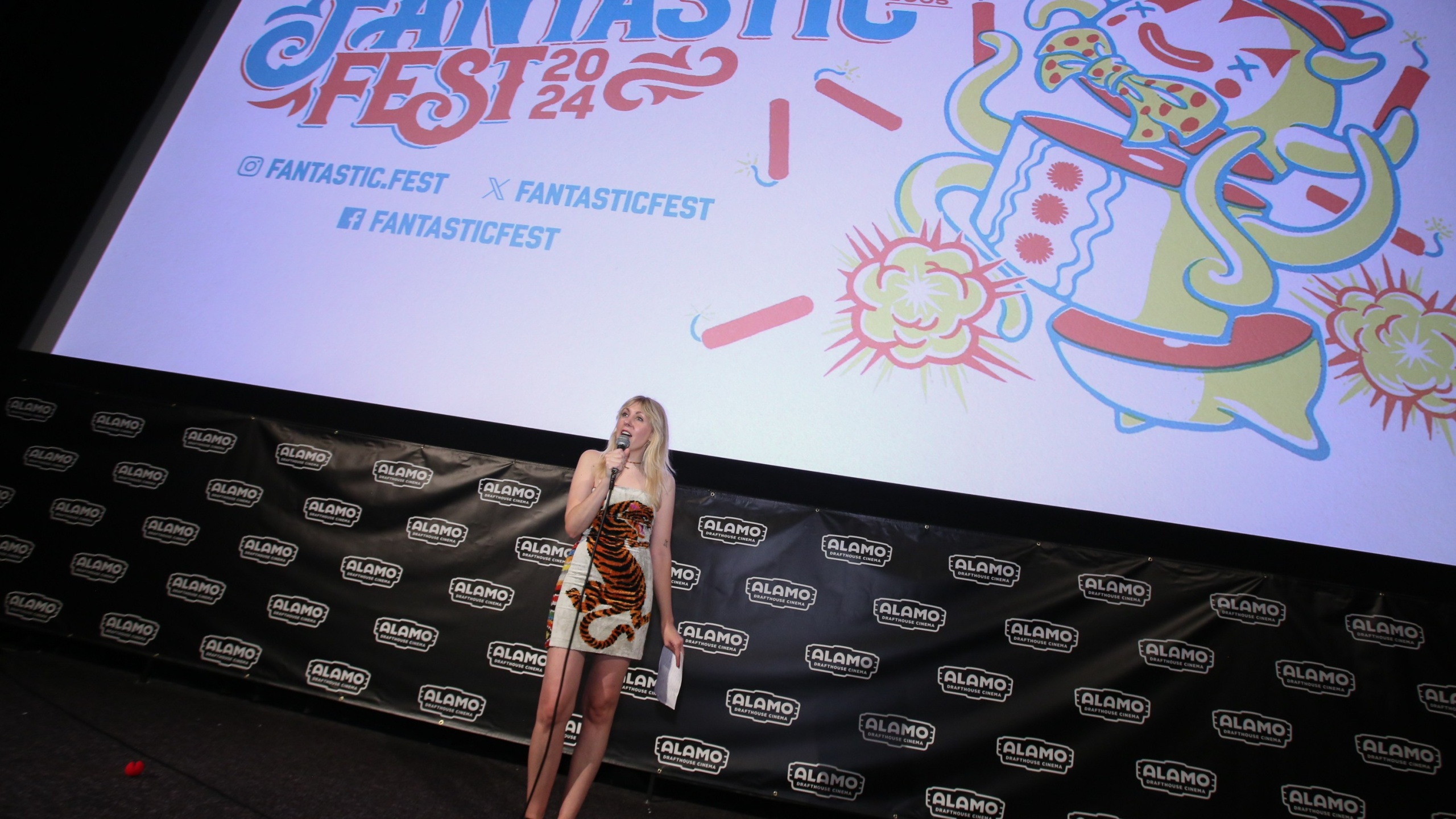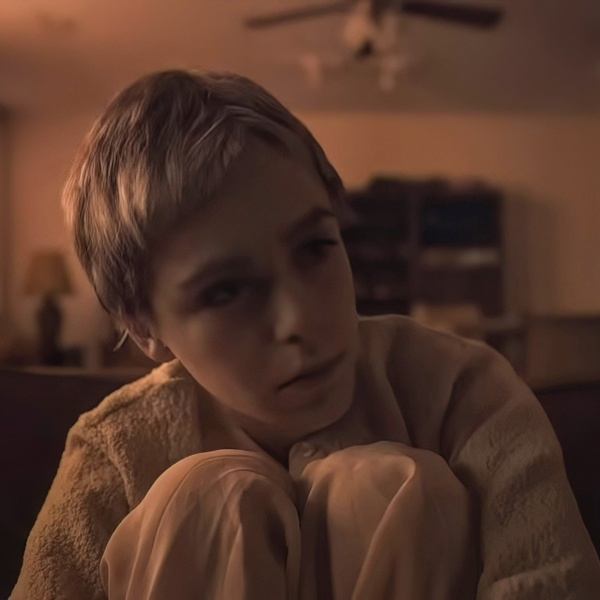If you love bold and shocking cinema, there was no place in the world you would have rather been Thursday night than the Alamo Drafthouse in Austin’s South Lamar neighborhood. The 2024 edition of Fantastic Fest kicked off with a bang, debuting Damien Leone’s bloody Christmas slasher “Terrifier 3” and the John Lithgow-Geoffrey Rush two-hander “The Rule of Jenny Pen” before fans headed to the festival’s legendary opening night party headlined by the McDonalds-themed metal cover band Mac Sabbath.
It was all par for the course at Fantastic Fest, America’s largest genre film festival, which has long been hailed as a celebration of cinematic weirdness. But while fans of gore, creatures, and kung-fu will have no shortage of genre treats to feast on, the lineup also features Sean Baker’s Palme d’Or-winning “Anora,” the Sundance Audience Award-winning documentary “The Remarkable Life of Ibelin,” Dreamworks Animation’s acclaimed family movie “The Wild Robot,” and Francis Ford Coppola’s polarizing epic “Megalopolis.”
The diversity of the lineup speaks to something that programmers have known instinctively for years: genre film fans are cinephiles. The communities that have formed around horror and action movies are often obsessive about the movies they consume, unfazed by subtitles, and eager to embrace films with shocking content. That gives programmers like Fantastic Fest festival director Lisa Dreyer the unique challenge of weaving lowbrow and highbrow cinema together in a way that satisfies their hardcore fanbases.
“We’re really looking for boundary pushing unique movies that you’ve never seen before, have an interesting point of view, are really wild and weird,” Dreyer said during a recent conversation with IndieWire. “I think more than other genre festivals we have a really expansive programming mandate. We kind of go from arthouse to grindhouse, and our audience, they’re really passionate about film, they’re very intelligent, and so they’re definitely along for the ride.”
If you’re passionate about film curation and preservation, programming for genre audiences might be the best job in the industry. Peter Kuplowsky, a veteran programmer who oversees the Midnight Madness section of TIFF (and has also programmed for Fantastic Fest), told me that his audience’s desire to be shocked gives him the freedom to highlight the kind of art that doesn’t easily fit into a box. He selects a different midnight movie to screen at the end of each and every of the 10 nights of TIFF each year, allowing him to curate a top 10 list of fringe cinema that he refers to as a “state of the union” for midnight movies. He balances premieres from genre stalwarts and rookie filmmakers alike in a variety of languages, a privilege that he attributes to an audience that is far more worldly than some might expect.
“There are certain stereotypes that I think come to mind, when people think of genre audiences, they think of the black T-shirt or random horror slasher sequel adorned on their chest,” Kuplowsky said with a laugh. “But more seriously, I think the thing that’s great about genre audiences and why it doesn’t matter what festival you’re looking at — whether it’s Midnight, whether it’s Fantasia, Fantastic Fest, Sitges, Bucheon International Fantastic Film Festival — what’s great about genre audiences is they’re an incredibly curious audience. I think they’re the most curious audience in the world.”

There’s a common misconception that genre festivals are simply showcases for horror films, but both Dreyer and Kuplowsky emphasized that their mandate is far broader. While scary movies will always play a large role in the genre film scene, the real magic often comes from finding films that are bold enough to appeal to horror fans from genres you wouldn’t expect to find in these spaces.
“I think what genre audiences are looking for — while, sure they want their cheeseburger, they love a meat-and-potatoes horror movie or meat-and-potatoes action movie — but they really want to be surprised, they really want to see something they haven’t seen before,” Kuplowsky said. “I think it’s why you’ll see films play at festivals that at first glance you go, ‘Well, that’s interesting that that film is playing a genre festival.’ Because I think both the curators and the audience are very curious and they want to be surprised, and that’s what they’re actually looking for.”
Genre festival programmers may have been gifted an abnormally passionate and open-minded audience, but finding a slate of work that’s diverse enough to satisfy those ravenous cinephiles every year is an art form in and of itself. Dreyer estimates that her programming team seriously considers about 1000 feature films every year for 90 slots on her lineup, and much of her job involves developing a pipeline of exciting artists and finding new work before anyone else knows that it exists.
Programmers travel to festivals around the world in pursuit of films that would fit their lineups, befriend tastemakers who are in the know about new projects, and scour Letterboxd with the hope of finding something off-the-wall that hasn’t broken through yet. But they also make a point of investing in the careers of the filmmakers they do program, with the hope that giving someone a break on their first feature could help them beat out other festivals for the filmmaker’s fifth feature once they’re on everyone’s radar.
“We’re so lucky to have helped launch a lot of filmmakers’ careers. We’ll oftentimes show a first feature and then they’ll come back to us down the line,” Dreyer said. “I think because our festival is so intimate, it’s really easy for the filmmakers to get to know the team. We’re pretty approachable. And so I think first time filmmakers, we really want to get to know them. We really want to stay in touch with them. And then when they have new work coming down the line, they always reach out to us first. And yeah, it’s been really fun to see the success of these filmmakers that no one knew were going to be famous and then all of a sudden they’re directing the next Marvel movie.”
Whether you’re a first-time filmmaker or a legend making an experimental late-career work, premiering your film to a genre audience is a unique pleasure. These fans aren’t afraid to laugh, scream, and cheer, often creating an environment that’s more akin to a rock concert than a run-of-the-mill film screening. And as soon as the lights go up, the vigorous debates begin. Part of a genre programmer’s duty is to select films that you know won’t please everyone — and even the fans who don’t love a particular movie wouldn’t have it any other way.
“There were films that were provocative and I could tell would split the room,” Kuplowsky said. “But if you’re not doing that, you’re not curating a midnight section.”



